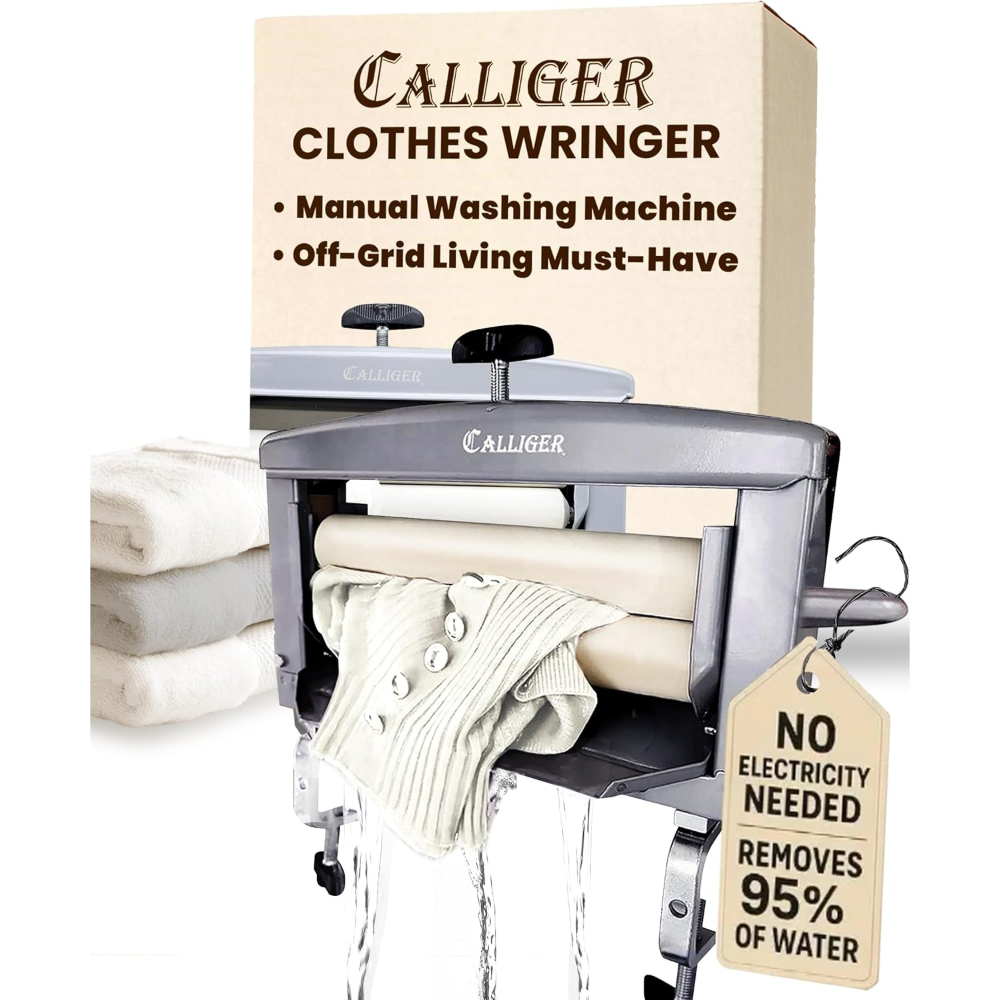The satisfying hum of a well-functioning clothes wringer is music to the ears of anyone looking to streamline laundry day and preserve their garments. In an era of high-efficiency washing machines, the humble wringer offers a powerful, eco-friendly, and gentle alternative for water extraction. You get your clothes drier, faster.
Traditional spin cycles can be harsh on delicate fabrics, leading to premature wear and tear. Clothes wringers, however, provide a manual or electric solution to remove excess water effectively. This cuts down drying time and extends the lifespan of your clothing, linens, and even outdoor gear. This guide will equip you with the knowledge to select the perfect wringer for your needs.
Understanding the Benefits of Using a Clothes Wringer
Reduced Drying Time
When you use a clothes wringer, you mechanically squeeze out much more water than a washing machine's spin cycle often does. This significantly cuts down on how long items need to air dry or spend in a tumble dryer. Think about all the time you'll save on laundry day.
This extra water removal also translates directly to lower energy consumption if you're using a tumble dryer. You spend less on your utility bills. It's a win-win for your schedule and your wallet.
Gentle Fabric Care
A clothes wringer handles your garments with care. It avoids the high-speed centrifugal forces of washing machine spin cycles, which can be tough on delicate materials. This means less stretching or damage to your favorite items.
It's perfect for hand-washed woolens, delicate lingerie, or even treasured antique textiles that need special handling. You can be sure your clothes are treated kindly, protecting their shape and weave. This method is simply much kinder to your clothes.
Extended Garment Lifespan
Less stress on fibers means your clothes stay looking new for longer. Wringing helps prevent stretching, snagging, and overall fabric degradation that often happens with harsher drying methods. Your wardrobe investments last.
Studies suggest gentle extraction can reduce fabric wear by up to 25-30% compared to harsh machine spinning. This gentle treatment helps preserve the integrity and beauty of your garments. Your favorite clothes will stay with you for years to come.
Types of Clothes Wringers Available
Manual Wringers
Manual wringers operate with hand-cranked rollers that you turn to press water out of fabric. They are often clamped to a sturdy surface, like a utility sink or a table. You control the speed and pressure, giving you a hands-on approach to laundry.
Pros and Cons of Manual Wringers
- Pros:
- Highly portable and easy to store.
- Generally more affordable to buy.
- No electricity needed, ideal for off-grid use.
- Cons:
- Requires physical effort to operate.
- Slower than electric models for large loads.
- Can be tiring if you have a lot of laundry.
Manual wringers are ideal for off-grid living, small apartment spaces, or when you just need to wring a few hand-washed items. Some people even see it as a good arm workout! Consider your physical capabilities before committing to one.
Electric Wringers
Electric wringers are powered by a motor, doing all the hard work for you. You simply feed the clothes through, and the rollers do the squeezing. This takes away the physical exertion manual wringers require.
Features to Look For in Electric Models
- Motor Power: A stronger motor can handle thicker fabrics and larger loads without bogging down.
- Roller Width: Wider rollers can accommodate bigger items like towels or small blankets more easily.
- Safety Features: Look for emergency stop buttons and protective guards around the rollers.
These models offer great convenience for households with larger laundry volumes or individuals with physical limitations. They make quick work of a big laundry pile. It's a real time-saver.
Combination Washer/Wringers
These units are an all-in-one solution, combining both washing and wringing functions in a single machine. They often feature a wash tub and a separate wringer, making laundry compact. You can wash a load, then move it directly to the wringer.
When a Combination Unit Might Be the Best Choice
A combination washer/wringer might be your best bet if you're short on space or want an integrated solution for your laundry needs. They are popular in small homes, RVs, or for those who prefer to keep their laundry appliances together. It offers a complete, compact laundry system.
Key Features to Consider When Buying
Roller Material and Size
The material of the wringer rollers impacts how well they grip fabric and how long they last. Rubber and silicone are common, offering good grip and gentleness on clothes. A wider roller, say 14 to 18 inches, lets you wring larger items like towels or small blankets without folding them too much.
You should choose a roller material known for its durability and gentleness on clothes. Make sure the width is suitable for the common laundry items you wash. This ensures efficient and careful wringing every time.
Construction and Durability
The overall build quality of your wringer is super important for long-term use. Look for sturdy frames made from heavy-gauge steel or rust-resistant aluminum. Reliable mechanisms, like strong gears and well-mounted rollers, prevent breakdowns.
"A strong frame and rustproof parts make all the difference in a wringer's life," notes a laundry appliance engineer. Investing in durable construction now saves you hassle and money later. You want a wringer that will last for years.
Ease of Use and Maintenance
Nobody wants a complicated laundry tool. Seek out models with simple cranking mechanisms for manual wringers, or clear, easy-to-understand controls for electric ones. Instructions should be straightforward, making operation a breeze.
Look for models with rollers and catch trays that are accessible for cleaning. Simple operation means you can get your laundry done quickly and without fuss. Easy maintenance also helps your wringer stay in good shape.
Safety Features
Safety is always a top concern, especially if kids or pets are around. For electric models, look for emergency stop buttons that quickly halt the rollers. Guards around moving parts protect fingers and clothing. A stable, non-slip base prevents the wringer from tipping over during use.
Ensuring Safe Operation for All Users
Always make sure the wringer is used on a level surface. Teach older children about safe distances and how to operate it only under supervision. Good safety features give you peace of mind while doing laundry.
Powering Your Choice: Manual vs. Electric Considerations
Physical Effort and Stamina
Operating a manual wringer needs some arm strength and stamina. You are doing the work yourself. An electric wringer, on the other hand, does the work with a motor, making it much easier on your body.
You need to honestly assess your physical capabilities and how much exertion you're willing to put into laundry. If you have any physical limitations or just want an easier experience, electric is the way to go. Your body will thank you.
Speed and Efficiency
The power source directly impacts how fast you can get your laundry wrung. Manual wringers take more time and effort, especially with larger loads. Electric models zip through clothes quickly, thanks to their motor.
An electric wringer can process a medium load in just a few minutes, while manual methods may take two to three times longer. If speed is a priority for your busy life, electric is the clear winner. You'll get more done, faster.
Cost and Budget
Manual wringers are generally much less expensive upfront, often costing under a hundred dollars. Electric wringers can range from a couple of hundred dollars to several hundred, depending on features. Your budget plays a big role in this decision.
Long-Term Value vs. Initial Investment
While electric models cost more initially, their speed and ease of use can offer greater long-term value, especially for large households. Manual wringers, though cheaper, might have hidden "costs" in terms of your time and effort. Think about which matters more for your specific situation.
Best Practices for Using Your Clothes Wringer
Preparing Your Laundry
Always make sure your laundry is well-rinsed before wringing. Excess soap can be pressed into the fabric, making it stiff or leaving residue. Avoid over-soaking items, as this just adds more water to remove.
For best results, wring garments one at a time or in small, manageable batches. This allows the rollers to apply even pressure. It also makes sure each item gets the most water out of it.
Operating the Wringer Correctly
Feed clothes through the rollers smoothly, leading with an edge, not a bunched-up middle. Adjust the pressure settings as needed; thicker items like towels need more pressure than delicate silks. Always guide the fabric through, but never force it.
For bulky items like towels or bedding, fold them evenly to prevent damage to the wringer or uneven water extraction. Let the wringer do the work, simply guiding the fabric through. This technique protects both your clothes and your machine.
Maintaining Your Wringer
After each use, take a moment to clean the rollers with a damp cloth to remove any lint or detergent residue. If your wringer has moving metal parts, a tiny bit of lubricant can keep them working smoothly. Always follow the manufacturer's instructions.
It is important to dry the wringer thoroughly after each use. This prevents rust on metal components and stops mildew from growing on rubber parts. Proper storage in a dry place will ensure your wringer lasts for many years to come.
3 of the Top Clothes Wringers Available on Amazon
We hope you find your next awesome thing from the list below! Each product was independently selected by our editors. Some may have been sent as samples for us to fiddle with, but all opinions in this article are our own. Oh, and FYI — AnnesAnalytics may collect a share of sales or other compensation from the links on this page if you decide to buy something (that's how we stay in business). Reviews have been edited for length and clarity. Enjoy finding your next awesome thing.
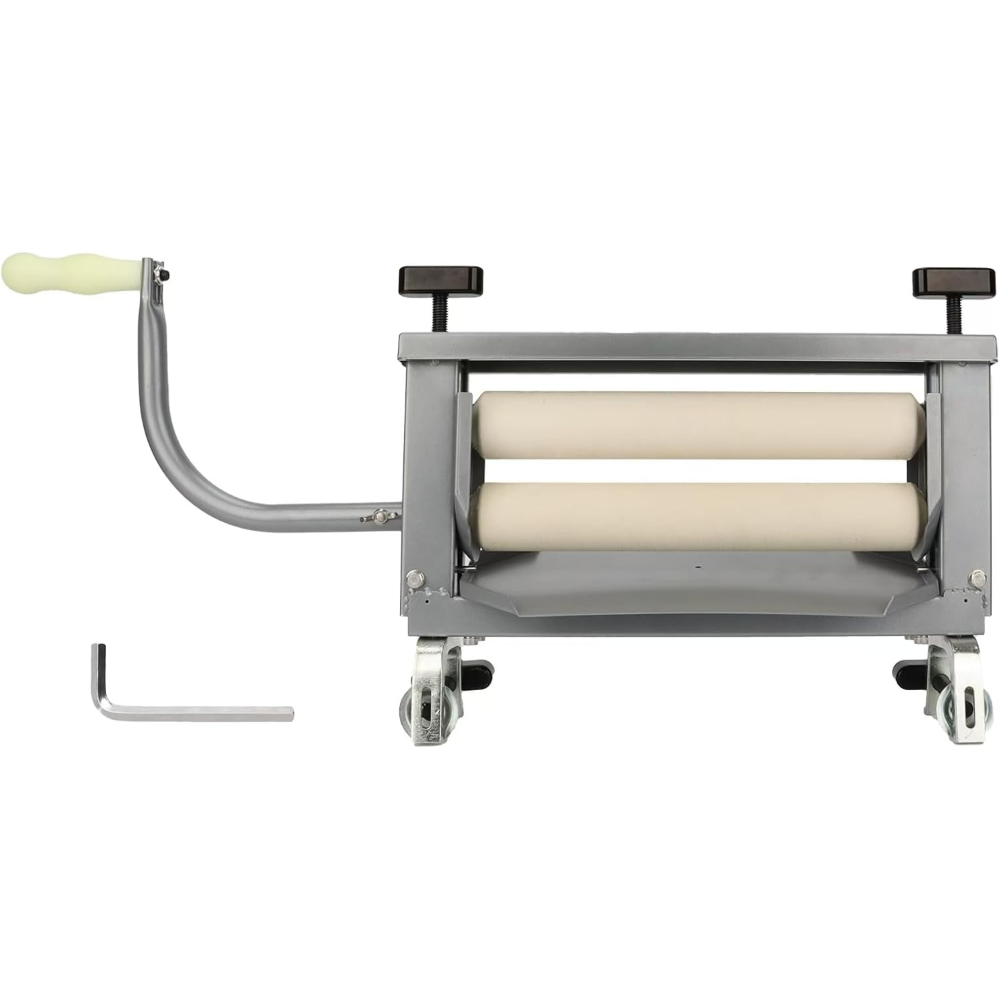
Upgraded Heavy Duty Clothes Wringer
Laundry Wringer for Chamois Cloth, Sponge, Dual Knob Design for Easier Operation
Why We Love This
The laundry wringer now has better parts. Its body is made of strong steel. A special metal paint is baked onto the surface. The rubber rollers use costly EPDM. This type of rubber makes them last longer.
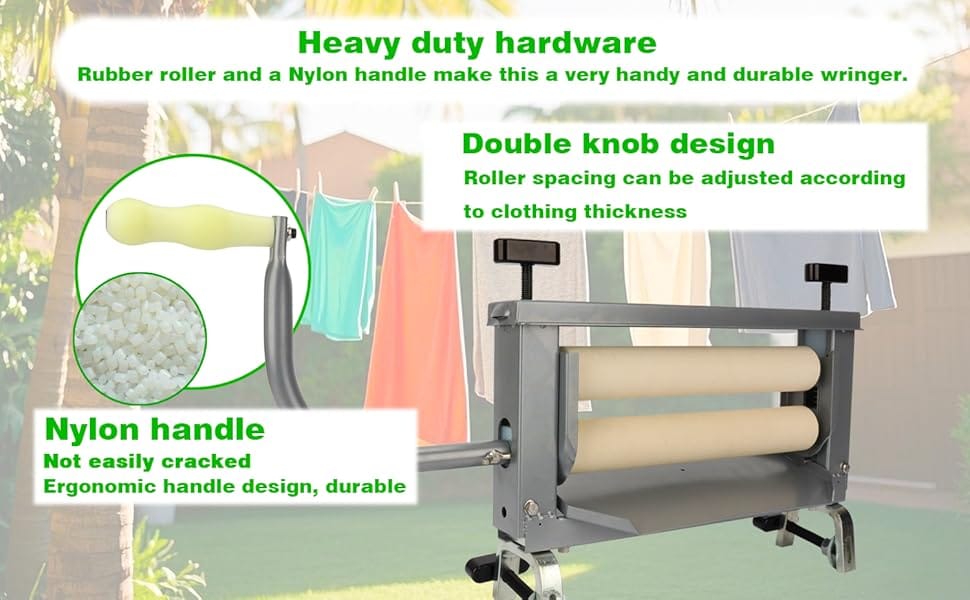
Encouraging Review
"This is surprisingly easy to use, considering how heavy it is. It is very sturdily built, and there is an adjustable plate under the roundels that directs the water away from the fabric as the wringer is being used. So, it doesn't matter if you're right or left handed, or whatever position you need to place the wringer in, it will still work just as well for everyone. I've used other wringers in the past, and this one is by far the best quality, best functionality, easiest to use, clean and dry. I expect this wringer to last for generations. Well worth the price." Amazon Review by Chris
Why We Love This
Hand washing clothes often means painful wringing. This tough work can ache your hands and wrists. You spend too much time on laundry. Then, everything takes forever to dry. Avoid the pain, stress, and wasted hours. Get a Calliger 360 Laundry Wringer instead. It removes far more water than any hand wring or small machine. Laundry day becomes much easier, even fun. You can also use it when washing your car. Your clothes will dry super fast.
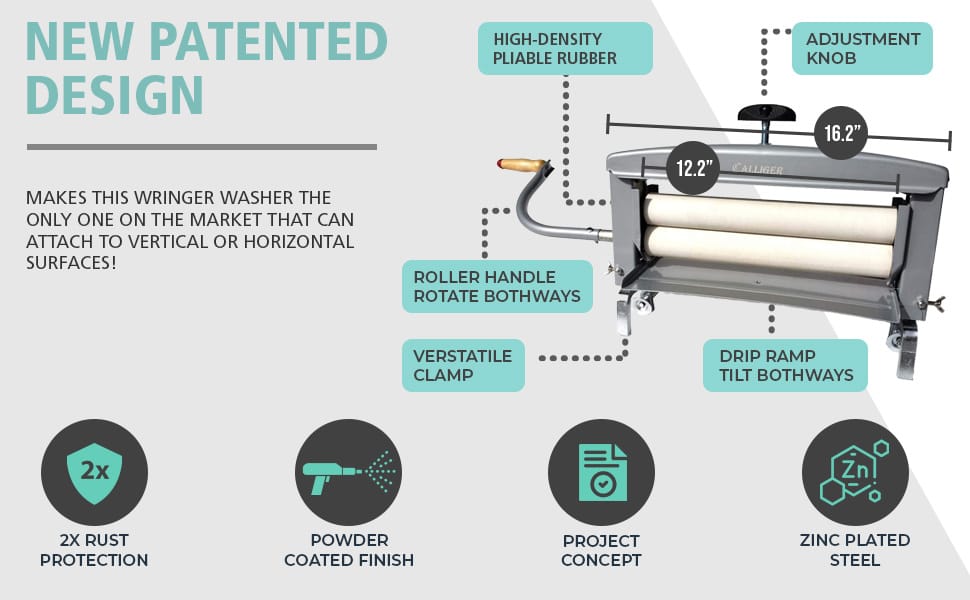
Encouraging Review
"Manual clothes wringer with adjustable rollers. Easy to use and ideal if you are hand washing your clothes. Great for power outages, camping and delicate items. A solid machine; easy to put together and use. Will save you money with less drying time needed if using automatic dryer." Amazon Review by in flagrante delicto
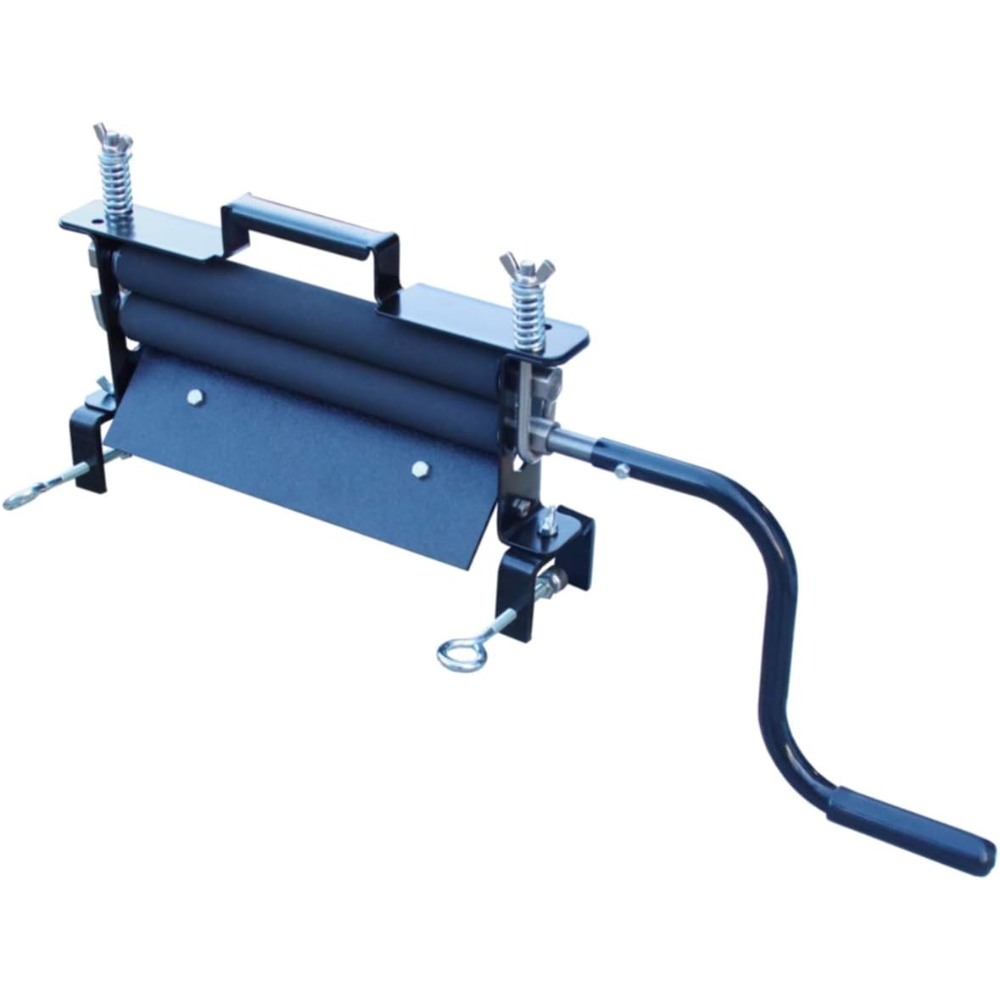
wisemen Heavy Duty Industrial Black Coated Steel, Hand Clothes Wringer
Made in the USA
Why We Love This
A hand wringer pulls extra water from cloth items. This tool quickly shortens drying times. Your clothes, towels, and swimwear will be ready sooner. It also saves you effort and time. Use it to wring out towels when washing your car. It works great for chamois too. The wringer is made from strong, black-coated steel. It features durable Nitrel rollers.
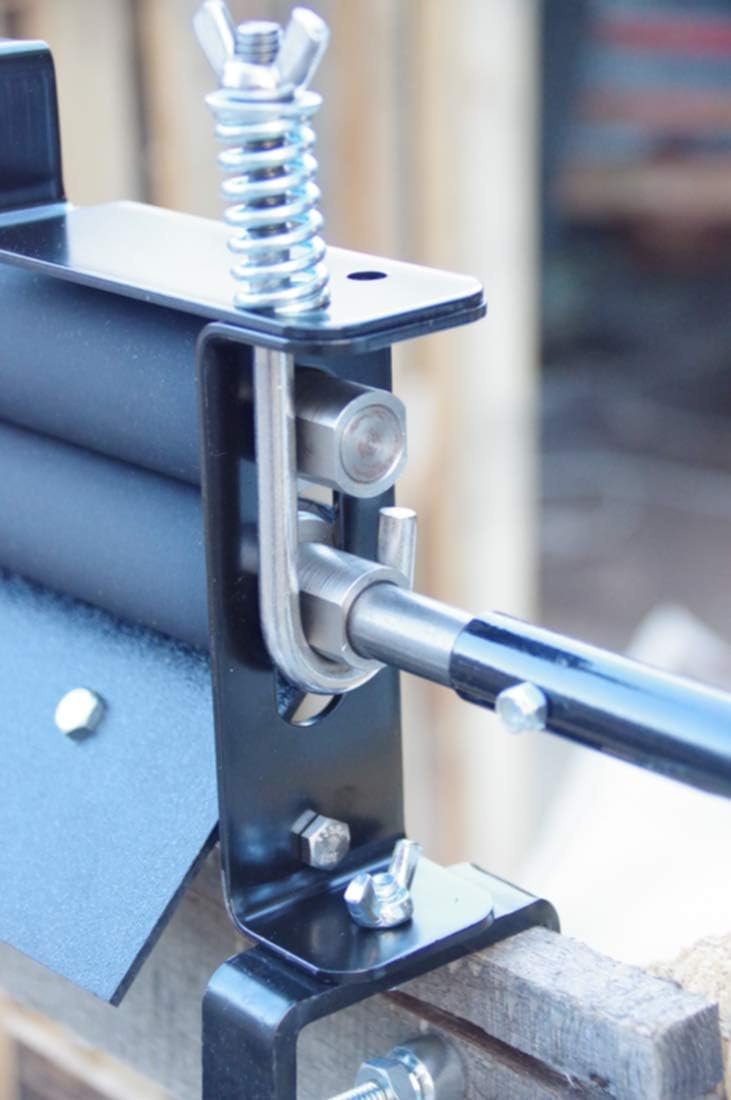
Encouraging Review
"Well made and works really well. Very high quality." Amazon Review by Happy Purchaser
Conclusion
Choosing the best clothes wringer means finding a tool that makes laundry day easier and more gentle on your garments. These simple devices offer a unique blend of efficiency, gentle fabric care, and energy savings. We explored different types, from simple manual models to convenient electric options, along with crucial features like roller material and safety.
Consider your specific laundry needs, the types of fabrics you wash, and your own physical capabilities. With the right choice, your clothes wringer will become an indispensable part of your home. You'll enjoy long-lasting results and enhanced laundry efficiency.
Frequently Asked Questions About Clothes Wringers
What is a clothes wringer?
A clothes wringer is a device that removes water from laundry. It uses rollers to squeeze water out of wet fabric. This speeds up drying time significantly.
Are clothes wringers still used today?
Yes, some people still use them. They are especially helpful for those with limited drying space. They also work well for delicate items that shouldn't go in a machine dryer.
What are the different types of clothes wringers?
There are manual and electric models. Manual wringers require you to turn a crank. Electric wringers do the work for you automatically.
How do I choose the right size wringer?
Consider the amount of laundry you do. A larger wringer handles more clothes at once. Think about the space where you will store it too.
Is a clothes wringer safe to use?
Yes, when used properly. Keep hands and fingers away from the rollers. Always follow the manufacturer's instructions for safe operation.


